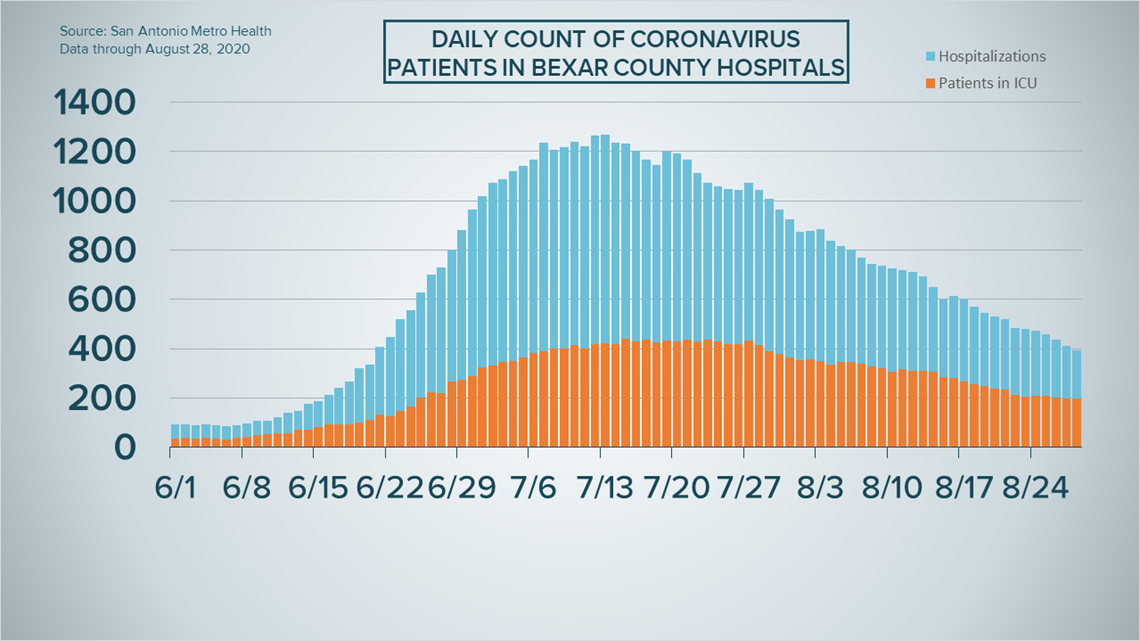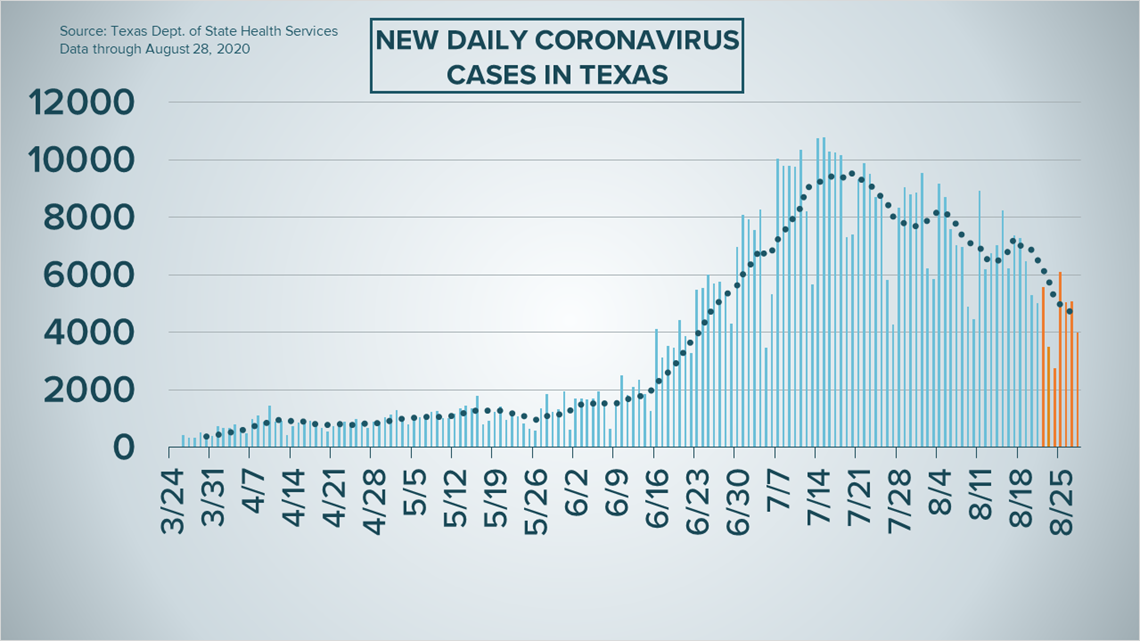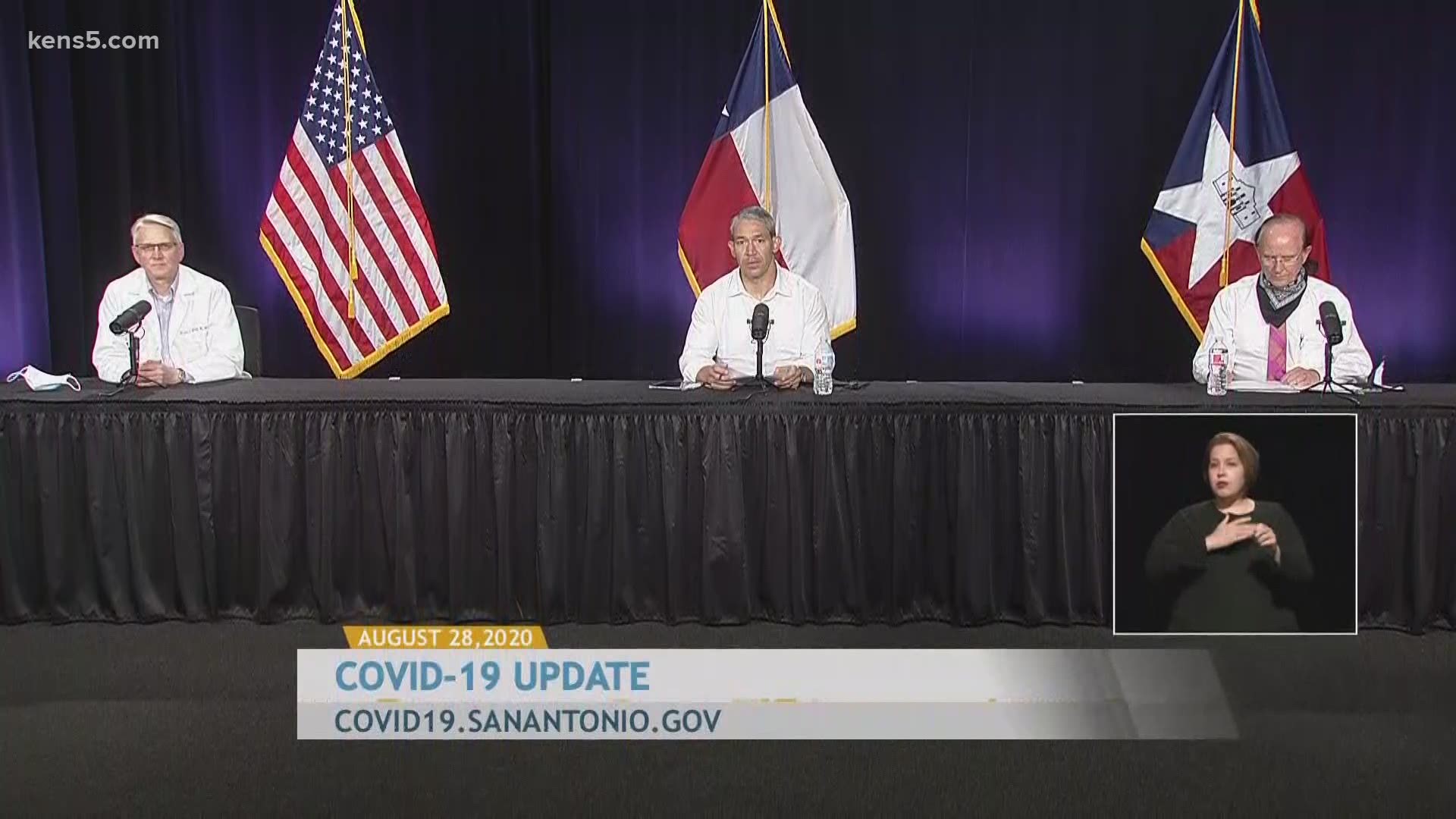SAN ANTONIO — We're tracking the latest numbers from the coronavirus pandemic in San Antonio and across Texas. Here are the latest numbers reported by Bexar and surrounding counties:
- Bexar County: 272 new cases were reported Friday, bringing the total number for the county to 46,083. The county death toll, meanwhile, rose to 780 after 13 additiona
lfatalities were reported. - Comal County: The county reported 37 additional cases and no additional deaths Friday. There have been a total of 2,945 cases of COVID-19 in the county – including 2,339 confirmed cases – while 85 county residents have died. County officials say there are 437 active coronavirus cases, and 2,423 residents are considered recovered.
- Hays County: Officials in Hays County on Friday reported 21 new cases in the county. As of Thursday evening, there were a total of 5,361 lab-confirmed cases in the county (2,348 of which are active) while the death toll stood pat at 46 for the second consecutive day.
How Bexar County is trending
We've tracked how many coronavirus cases have been confirmed in Bexar County from the time officials began reporting cases in March 2020. The graphic below shows the number of cases since June and charts those daily case numbers along a 7-day moving average to provide a more accurate picture of the overall coronavirus case curve in our area and the direction we're trending amid the pandemic.
On Friday, Mayor Ron Nirenberg reported an additional 272 coronavirus cases in Bexar County, bringing the total to 46,038. The relatively higher total (compared to recent days) has inched the seven-day case total average up to 152.
Nirenberg also reported 13 additional virus-related deaths stretching back to July 2. That brings the county death toll to 780.


Hospitalizations dropped to under 400 for Bexar County for the first time in weeks on Friday, with 393 residents receiving treatment for coronavirus symptoms. The numbers of patients on ventilators (125) and in intensive care (196) also decreased slightly from Thursday.


Coronavirus in Texas
The Texas Department of State Health Services on Friday reported an additional 4,031 cases of the novel coronavirus across the state, 59 of which are from a backlog investigation. As of Friday, at least 601,768 Texans have been infected with COVID-19.
Meanwhile, the state reported an additional 196 coronavirus-related deaths, bringing the total for the Lone Star State to 12,266.


As with the local number, Texas hospitalizations continued to drop on Friday. The number of residents receiving treatment for COVID-19 symptoms was down to 4,422, the lowest level since late June. Of the more than 601,000 Texans who have been infected, nearly 485,000 have recovered from the virus.
As the school year begins to get underway for local districts, we are also keeping track of the most important updates for each, including links to dashboards created to track coronavirus cases.
Latest Coronavirus Headlines
- US regulators allow remdesivir for all hospitalized coronavirus patients
- New moms reflect on the impacts the coronavirus pandemic has had on them and their babies
- Delta has banned around 240 passengers for refusing to wear masks
- Voting in person is "low-risk activity" for catching coronavirus
- CDC flip-flops on guidelines for people who should get tested after being exposed to coronavirus
- San Antonio ISD plans to move students gradually back to school starting Sept. 8
- Wear The Gown: Asthma, nebulizers, and spread of coronavirus
- Does a face mask protect me, or just the people around me?
Coronavirus symptoms
The symptoms of coronavirus can be similar to the flu or a bad cold. Symptoms include fever or chills, cough, shortness of breath or difficulty breathing, fatigue, muscle or body aches, headache, new loss of taste or smell sore throat, congestion or runny nose, nausea or vomiting and diarrhea, according to the Centers for Disease Control.
Most healthy people will have mild symptoms. A study of more than 72,000 patients by the Centers for Disease Control in China showed 80 percent of the cases there were mild.
But infections can cause pneumonia, severe acute respiratory syndrome, kidney failure, and even death, according to the World Health Organization. Older people with underlying health conditions are most at risk.
On June 25, the CDC expanded the list of groups at a higher risk of severe illness due to coronavirus.
Experts determined there was consistent evidence these conditions increase a person's risk, regardless of age:
- Chronic kidney disease
- COPD (chronic obstructive pulmonary disease)
- Obesity (BMI of 30 or higher)
- Immunocompromised state (weakened immune system) from solid organ transplant
- Serious heart conditions, such as heart failure, coronary artery disease, or cardiomyopathies
- Sickle cell disease
- Type 2 diabetes
The CDC believes symptoms may appear anywhere from two to 14 days after being exposed.
Human coronaviruses are usually spread...
- Between people who are in close contact with one another (within about 6 feet).
- Through respiratory droplets produced when an infected person coughs, sneezes or talks. These droplets can land in the mouths or noses of people who are nearby or possibly be inhaled into the lungs.
- Some recent studies have suggested that COVID-19 may be spread by people who are not showing symptoms.
Help stop the spread of coronavirus
- Stay home when you are sick.
- Eat and sleep separately from your family members
- Use different utensils and dishes
- Cover your cough or sneeze with your arm, not your hand.
- If you use a tissue, throw it in the trash.

